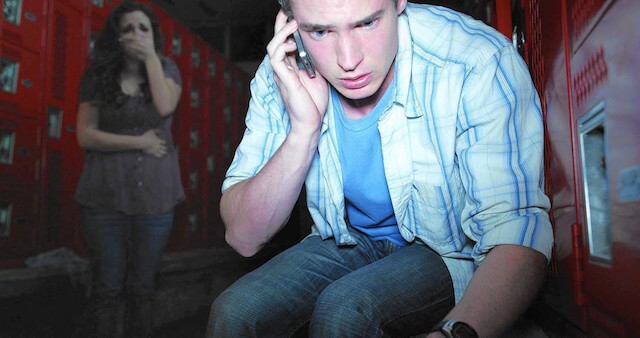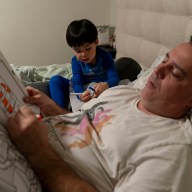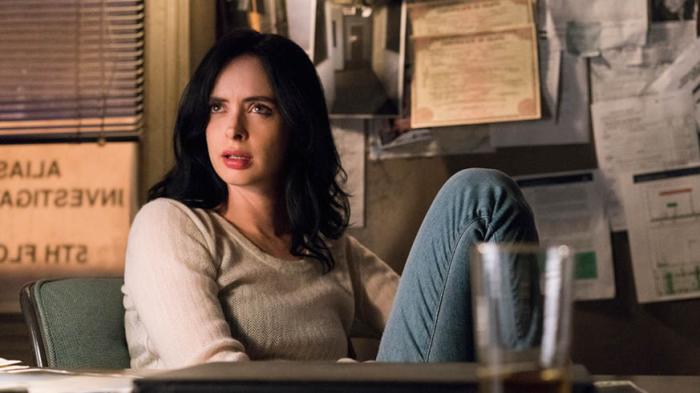‘The Gallows’ Do the kids even use cameras these days? That is, cameras that aren’t part of palm-sized smartphones. “The Gallows,” the latest cheapie found footage horror thing, was actually made three years ago, but it arrives, belatedly at a time when the people it depicts —often conveniently foolish high schoolers with little sense of self-preservation —probably don’t muck about with a camera in their hand, especially, but not exclusively, when they’re running, crying and screaming, for their lives. Once upon a time, in the ’80s and ’90s, humanity (or just parents) documented its every mundane activity with bulky camcorders that weighed down shoulders. Found footage horror was a natural off-shoot of this technology, going back to lightweight 16mm cameras in the 1950s that allowed civilians to self-document with ease. Today when people self-document it’s mostly through words or images on social media; if it’s video it tends to be carefully curated, six-second Vines. And “The Gallows,” at 81 minutes, is tantamount to about 810 Vines, only it’s made of artless long takes that would bore even Warhol fanatics. What “The Gallows” gets wrong, semi-accidentally, about how we live now is the only thing of real interest in what is otherwise a barely there addition to the canon that “The Blair Witch Project” wrought. It actually opens with camcorder footage (with date stamp) from a 1993 high school play, which appears to be some florid Revolutionary War-era drama that ends with a hanging. Recording parents mutter, loudly, to each other, only to watch as an apparent accident leaves a kid really hanged. Cut to two decades later and the high school is morbidly staging the same play again, this time with a jock (Reese Mishler) who can’t act. His inability to remember lines is mocked by our super-duper-mega-ultra-obnoxious guide and videographer (Ryan Shoos), who is inexplicably documenting everything —even, oddly, when they break into the high school after dark to mess with the set. There are a couple long takes where we’re asked to scan the frame, looking for the ghost or demon or whatever that soon starts haunting them. (There are only four characters, by the way, which makes the brief length still seem excessive.) But there are seriously only a couple —as in, two, though maybe just one. Most of “The Gallows” is eaten up by shakycam running, shakycam crying, shakycam screaming, shakycam everything, all played by overactors (or Mishler, who has two modes: remote or bug-eyed). It never lets up, which is to say it never devises set pieces. Say what you will about them, but the “Paranormal Activity” films are made by filmmakers who think in carefully-sculpted sequences. This is a bunch of kids trying to get rich. But all the thumb-twiddling longeurs provide plenty of time for you to wonder if found footage is even a viable genre these days. People simply don’t record their lives this way anymore, with a camera running at all times lest someone miss something. Silly though it was, last year’s desktop horror film “Unfriended” was a savvy reminder that the kids these days live on screens, and that horror has to evolve or upgrade with the times. As such “The Gallows” is a relic, albeit for a genre that made sense even two years ago —such is the speed with which tech and our relationship to it changes. Nowadays characters need a really, really good reason to keep the camera going, as in Bobcat Goldthwait’s funny but also, eventually, truly terrifying “Willow Creek.” There’s no good reason why the camera’s always on in “The Gallows.” And so, for the most part, found footage horror movies with characters running about with cameras rolling even they shouldn’t be are dead; long live found footage horror movies with characters running about with cameras rolling even they shouldn’t be. Follow Matt Prigge on Twitter @mattprigge
Directors: Travis Cluff, Chris Lofing
Stars: Reese Mishler, Cassidy Gifford
Rating: R
1 Globe (out of 5)
‘The Gallows’ suggests found footage horror is dead

Warner Bros. Pictures


















